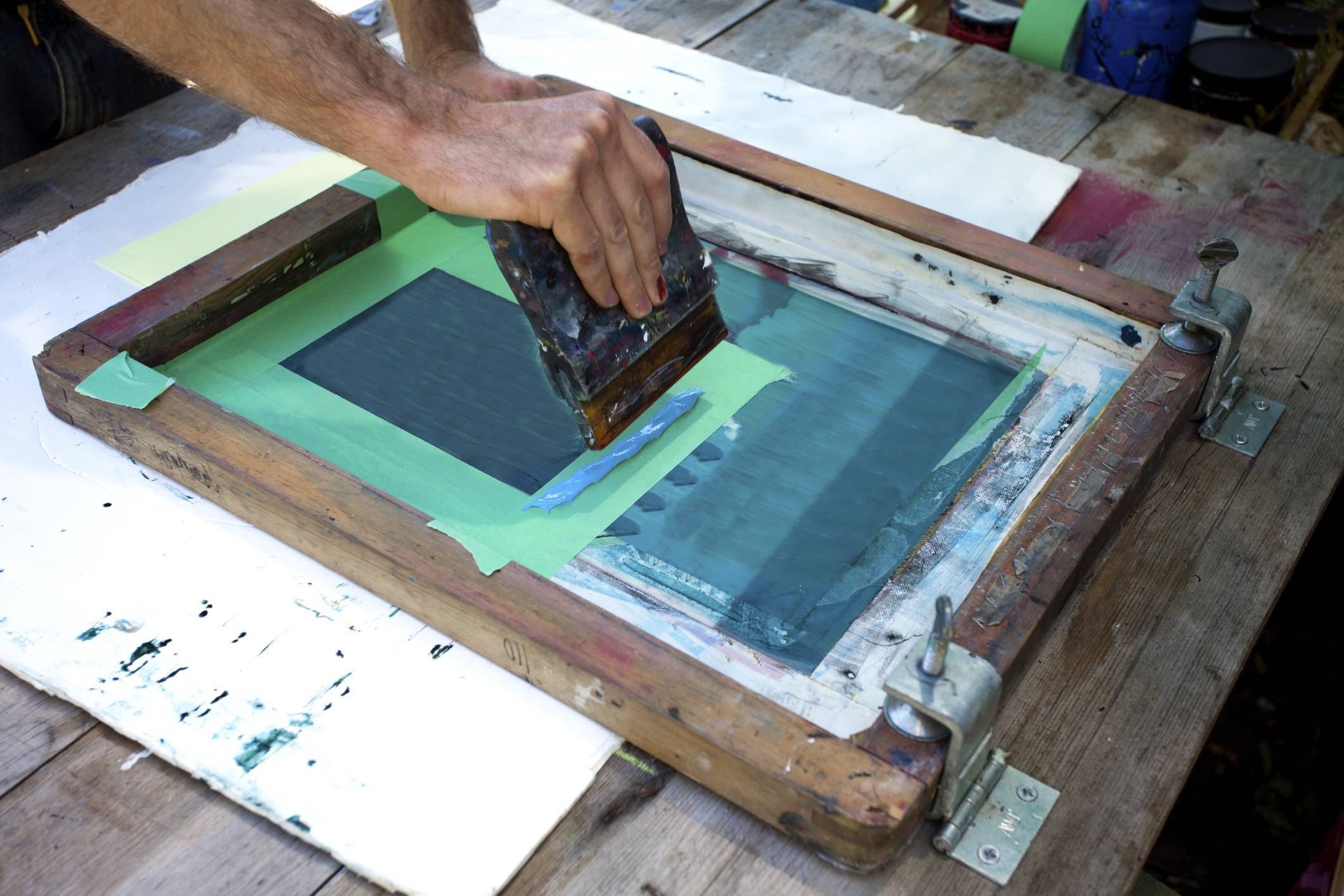The Vital Overview to Understanding Screen Printing and Its Versatile Makes use of
Screen printing has a rich history that goes back to ancient times, evolving into an innovative method used across numerous markets today. This guide checks out the complexities of the screen printing process, outlining its applications in advertising and marketing, home, and style style - 10:9 Design Texas. Recognizing these principles can open imaginative possibility for both artistic and commercial projects. The complying with sections will expose essential suggestions and techniques to enhance one's screen printing endeavors
The History of Screen Printing
Screen printing has origins that map back centuries, its evolution mirrors the creative and technical innovations of different cultures. Coming from old China, the technique was originally made use of for embellishing textiles and later spread to Japan, where it came to be integral to Ukiyo-e woodblock printing. The method shifted to Europe in the 18th century, where it obtained appeal among craftsmens and industrial printers. The creation of image emulsion in the 20th century transformed screen printing, permitting more elaborate designs and greater performance. Musicians like Andy Warhol better moved its appeal, utilizing the medium to create legendary jobs that combined commercialism and art. By the late 20th century, screen printing had developed itself as a functional method, utilized in vogue, advertising, and fine art. Today, it remains to advance, integrating digital technology and expanding its applications throughout different industries.
The Screen Printing Process Explained
Screen printing changes creative visions right into tangible styles via a series of exact actions. At first, a photo is created and afterwards moved onto a screen, normally made of fine mesh material extended over a frame. A light-sensitive emulsion is related to the screen, which is subjected to light, hardening in areas not covered by the photo. After washing out the unhardened solution, a pattern is formed.
Next off, the screen is positioned over the substrate, whether it be fabric, paper, or an additional product. Ink is then pushed through the open areas of the pattern utilizing a squeegee, transferring the style onto the substrate listed below. This process can be duplicated for multiple shades, requiring separate displays for each color. Ultimately, the published item is cured using heat to assure the ink sticks properly, resulting in a durable, vibrant layout all set for usage.
Sorts Of Screen Printing Techniques

Additionally, specialized methods, such as discharge screen printing, eliminate dye from the textile to develop softer prints, while foil screen printing applies metal foil to achieve a glossy surface (10:9 Design Embroidery). Each method provides distinctive features, satisfying various imaginative requirements and production ranges, ultimately increasing the possibilities within the screen printing domain
Applications of Screen Printing in Numerous Industries

Additionally, the signage and advertising and marketing sectors use screen printing for producing attractive screens and banners. This approach permits for bold colors and detailed designs that capture focus. In electronic devices, screen printing is employed for using conductive inks to circuit boards, vital for part connections. Furthermore, the home style sector welcomes screen printing to produce unique styles on fabrics and wall surface art. On the whole, screen printing acts as a vital device throughout varied areas, boosting products with personalized and visually enticing graphics.
Tips for Effective Screen Printing Projects
While taking on a screen printing task, cautious interest to detail can considerably enhance the last end result. Initially, choosing top notch products is necessary; this consists of the screen, inks, and substratums. Making use of ideal mesh counts can affect ink deposition and detail resolution. Prep work is similarly essential; comprehensive cleaning of screens and correct direct exposure times assure crisp prints.
Next, accurate enrollment is essential for multi-color prints. Utilizing placement tools can aid accomplish precise layering. In addition, testing prints on scrap products prior to manufacturing aids identify possible issues without throwing away resources.

Frequently Asked Inquiries
What Materials Are Ideal for Screen Printing on Material?
Cotton and polyester blends are excellent for screen printing on material due to their longevity and ink absorption. In addition, specialty textiles like silk or canvas can create unique appearances and surfaces, enhancing the total style high quality.
Exactly how Do I Tidy and Maintain Screen Printing Devices?
To maintain and clean up screen printing devices, one must on a regular basis wash displays with ideal check here solvents, inspect squeegees for wear, lube relocating parts, and store all items in a completely dry, dust-free atmosphere to extend their life-span.
What Are the Environmental Impacts of Screen Printing?
Screen printing can have considerable ecological influences, consisting of chemical waste from solvents and inks, water usage during cleaning processes, and energy usage. Lasting methods and eco-friendly materials are important for lessening these adverse results.
Can Screen Printing Be Done at Home Efficiently?
Screen printing can be successfully done at home with the right materials and techniques. Enthusiasts can create quality prints, though success depends upon their skill degree, tools, and understanding of the procedure included.
What Are the Prices Connected With Starting a Screen Printing Business?

Beginning a screen printing service includes expenses for equipment, products, and office. First expenses typically vary from a few hundred to numerous thousand dollars, relying on the scale, top quality of machinery, and wanted production ability.
Screen printing has a rich background that dates back to old times, progressing into an innovative method made use of across numerous industries today. An additional technique, rotating screen printing, employs cylindrical displays, promoting continuous printing on material rolls, thus enhancing efficiency for large productions. Additionally, specialized techniques, such as discharge screen printing, get rid of color from the fabric to create softer prints, while aluminum foil screen printing uses metal foil to achieve a shiny finish. In the style industry, screen printing is extensively used to produce vibrant layouts on clothing, making it possible for brand names to display their special styles. Cotton and polyester blends are excellent for screen printing on material due to their sturdiness and ink absorption.